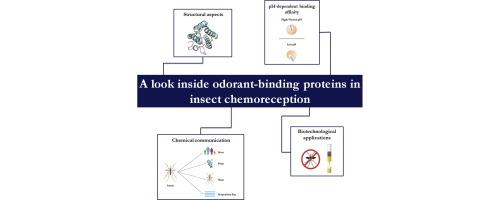A look inside odorant-binding proteins in insect chemoreception |
| |
| Affiliation: | 1. Department of Entomology, University of California Riverside, Riverside, CA, USA;2. Institute for Integrative Genome Biology, University of California Riverside, Riverside, CA, USA;1. Hubei Insect Resources Utilization and Sustainable Pest Management Key Laboratory, College of Plant Science and Technology, Huazhong Agricultural University, Wuhan 430070, People''s Republic of China;2. Hubei Ecology Vocational College, Wuhan 430200, People''s Republic of China;2. Institute of Ecology & Environmental Sciences of Paris, INRA, Versailles, France;3. School of Biological Sciences, University of Auckland, Auckland, New Zealand;4. The New Zealand Institute for Plant & Food Research Limited, Auckland, New Zealand |
| |
| Abstract: | 
Detection of chemical signals from the environment through olfaction is an indispensable mechanism for maintaining an insect’s life, evoking critical behavioral responses. Among several proteins involved in the olfactory perception process, the odorant binding protein (OBP) has been shown to be essential for a normally functioning olfactory system. This paper discusses the role of OBPs in insect chemoreception. Here, structural aspects, mechanisms of action and binding affinity of such proteins are reviewed, as well as their promising application as molecular targets for the development of new strategies for insect population management and other technological purposes. |
| |
| Keywords: | Odorant-binding protein Insect Review Olfactory system Chemical communication |
| 本文献已被 ScienceDirect 等数据库收录! |
|

